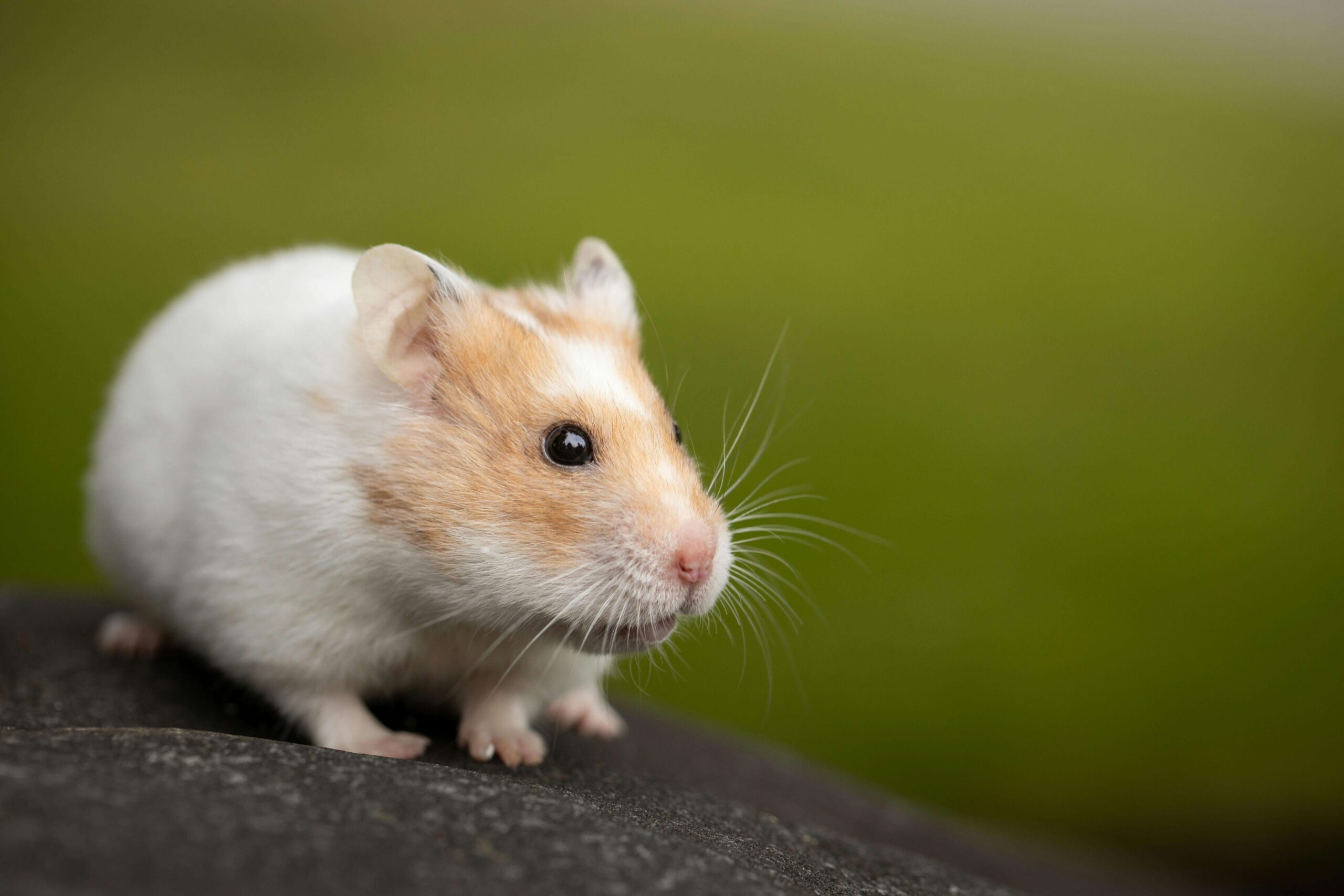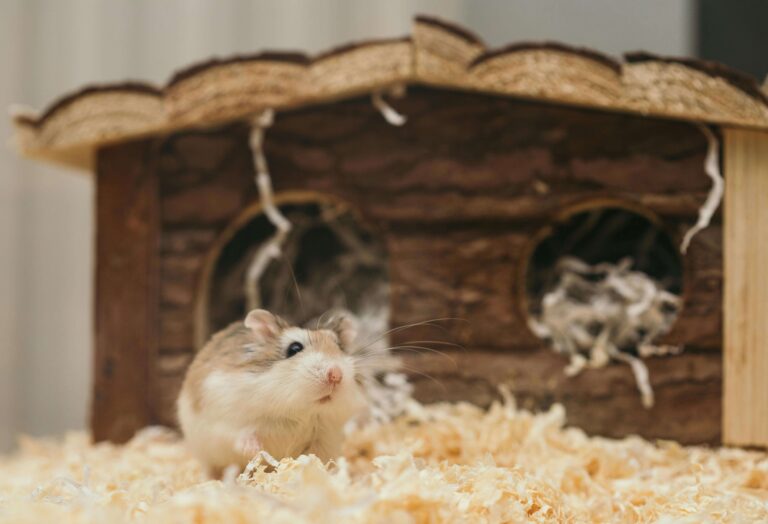Is Hamsters Dangerous Hamsters.pk
Understanding Hamster Behavior: Separating Fact from Fiction
Hamsters are popular pets known for their cute appearance and relatively low maintenance. However, many people have misconceptions about hamster behavior, leading to misunderstandings about these furry companions. In this article, we’ll explore the facts behind hamster behavior and dispel some common myths.
Nocturnal Nature
One of the most important things to understand about hamsters is that they are nocturnal animals. This means that they are most active during the night and sleep for much of the day. Many new hamster owners are surprised to find that their pets are not as active during the day as they expected.
Solitary Lifestyles
Another fact about hamsters is that they are solitary animals. In the wild, hamsters live alone and only come together to mate. In captivity, housing multiple hamsters together can lead to fighting and stress, especially if they are not introduced at a young age or if they are of the same sex.
Territorial Behavior
Hamsters are also known for their territorial behavior. They will often mark their territory with scent glands located on their hips. This behavior is normal and should not be cause for concern unless it becomes excessive or if the hamster is showing signs of stress.
Burrowing Instincts
Hamsters have strong burrowing instincts and will often create elaborate tunnels and nests in their bedding. This behavior is natural and should be encouraged by providing your hamster with plenty of bedding material to dig in.
Food Hoarding
Another common behavior among hamsters is food hoarding. Hamsters have expandable cheek pouches that they use to carry food back to their nests. This behavior is instinctual and not a sign that your hamster is underfed.
Stress and Aggression
While hamsters are generally docile pets, they can become stressed or aggressive if they feel threatened or if their needs are not being met. Signs of stress in hamsters include excessive grooming, bar chewing, and hiding. If your hamster is showing signs of stress or aggression, it’s important to identify the cause and make changes to their environment or care routine as needed.
In conclusion, understanding hamster behavior is key to providing your furry friend with a happy and healthy life. By separating fact from fiction and recognizing the unique needs and instincts of these small pets, you can create a safe and enriching environment for your hamster to thrive in.

Potential Health Risks Associated with Hamster Ownership
While hamsters make adorable and low-maintenance pets, it’s essential to be aware of the potential health risks associated with owning these small animals. In this article, we’ll discuss some of the health concerns that both hamsters and their owners may face.
Allergies
One of the most common health risks associated with hamster ownership is allergies. Some people may be allergic to hamster fur, saliva, or urine, which can cause symptoms such as sneezing, runny nose, itchy eyes, and skin rashes. If you or someone in your household has a history of allergies, it’s a good idea to spend some time around hamsters before bringing one home to ensure that you don’t have a reaction.
Bites and Scratches
Although hamsters are generally docile animals, they may bite or scratch if they feel threatened or scared. Hamster bites can be painful and may become infected if not properly cleaned and treated. It’s important to handle your hamster gently and to teach children how to properly interact with them to minimize the risk of bites and scratches.
Zoonotic Diseases
Hamsters can carry several zoonotic diseases, which are illnesses that can be transmitted from animals to humans. Some of the most common zoonotic diseases associated with hamsters include:
- Lymphocytic Choriomeningitis (LCM): This viral infection can cause flu-like symptoms in humans and can be transmitted through exposure to hamster urine, droppings, or saliva.
- Salmonellosis: Hamsters can carry Salmonella bacteria, which can cause diarrhea, fever, and abdominal cramps in humans. The bacteria can be transmitted through contact with hamster feces or contaminated food or water.
- Ringworm: This fungal infection can cause circular patches of hair loss and skin irritation in both hamsters and humans. It can be transmitted through direct contact with an infected animal or contaminated bedding.
To minimize the risk of zoonotic diseases, it’s important to practice good hygiene when handling your hamster and to keep their living area clean and well-maintained.
Hamster Health Issues
In addition to the health risks posed to humans, hamsters themselves can develop a range of health issues. Some common health problems in hamsters include:
- Dental Problems: Hamsters’ teeth grow continuously throughout their lives, and if they don’t wear down properly, they can become overgrown and cause difficulty eating and other health issues.
- Digestive Issues: Hamsters have sensitive digestive systems and can develop problems such as diarrhea, constipation, and intestinal blockages if not fed a proper diet.
- Respiratory Infections: Hamsters are prone to respiratory infections, which can be caused by a variety of factors, including poor ventilation, dusty bedding, and stress.
Regular check-ups with a veterinarian who is experienced in treating small animals can help catch and treat health issues early on.
In conclusion, while hamsters can make wonderful pets, it’s important to be aware of the potential health risks associated with owning these small animals. By taking proper precautions and providing your hamster with a healthy environment and diet, you can help minimize these risks and ensure that both you and your furry friend stay happy and healthy.
Creating a Safe Environment for You and Your Hamster
When bringing a hamster into your home, it’s crucial to create a safe and comfortable environment for both you and your furry friend. By taking the necessary precautions and providing your hamster with the proper housing and care, you can ensure a happy and healthy relationship with your pet. In this article, we’ll discuss the key elements of creating a safe environment for you and your hamster.
Choosing the Right Cage
The first step in creating a safe environment for your hamster is selecting the appropriate cage. A good hamster cage should be:
- Spacious: Hamsters need plenty of room to run, play, and explore. Choose a cage that is at least 24 inches by 12 inches and at least 12 inches tall.
- Secure: Hamsters are excellent escape artists, so make sure the cage has a secure latch and no gaps or holes through which your hamster can squeeze through.
- Well-ventilated: Adequate ventilation is essential to prevent the buildup of harmful ammonia from your hamster’s urine. Look for a cage with wire sides or a mesh top.
- Easy to clean: Regular cleaning is necessary to maintain a healthy environment for your hamster. Choose a cage with a removable base or one that is easy to access for cleaning.
Providing the Essentials
Once you have the proper cage, it’s time to fill it with the essential items your hamster needs to thrive. These include:
- Bedding: Provide your hamster with a layer of soft, absorbent bedding material such as wood shavings or paper-based bedding. Avoid cedar or pine shavings, as these can be harmful to your hamster’s respiratory system.
- Food and water: Feed your hamster a balanced diet consisting of commercial hamster food, fresh vegetables, and occasional treats. Provide fresh, clean water in a water bottle or bowl.
- Hideaways: Hamsters need a place to hide and feel secure. Provide your hamster with a small hideaway or sleeping area, such as a small box or a ceramic hideout.
- Exercise wheels: Exercise is essential for your hamster’s physical and mental health. Provide your hamster with a sturdy, appropriately sized exercise wheel.
Hamster-Proofing Your Home
In addition to providing a safe cage environment, it’s important to hamster-proof your home to prevent accidents and escapes. Some tips for hamster-proofing your home include:
- Blocking off small spaces: Hamsters can squeeze into tiny spaces, so make sure to block off any gaps or holes in your home where your hamster could get stuck or escape.
- Removing hazards: Keep your hamster away from electrical cords, toxic plants, and other potential hazards in your home.
- Supervising playtime: When allowing your hamster out of their cage for playtime, make sure to supervise them closely and provide a safe, enclosed area for them to explore.
Regular Veterinary Check-Ups
Finally, regular check-ups with a veterinarian who is experienced in treating small animals are essential for maintaining your hamster’s health and catching any potential health issues early on. Schedule check-ups at least once a year, or more frequently if your hamster has any health concerns.
By following these guidelines and providing your hamster with a safe, comfortable environment, you can ensure a long and happy relationship with your furry friend.
Hamsters as Pets: Debunking Common Misconceptions about Their Temperament
Hamsters are popular pets, often chosen for their cute appearance and relatively low maintenance. However, there are many misconceptions about hamster temperament that can lead to misunderstandings and even disappointment for new pet owners. In this article, we’ll debunk some of the most common myths about hamster temperament and provide a more accurate picture of what to expect when owning these furry friends.
Myth 1: Hamsters are always friendly and enjoy being handled
One of the most prevalent misconceptions about hamsters is that they are naturally friendly and enjoy being handled by their owners. While some hamsters may be more sociable than others, it’s important to remember that they are prey animals and may feel threatened or scared when being handled, especially if they are not used to it.
To build a trusting relationship with your hamster, it’s crucial to approach them slowly and gently, allowing them to become comfortable with your presence. Gradually introduce handling, using treats as positive reinforcement, and never force interaction if your hamster appears stressed or agitated.
Myth 2: Hamsters are low-maintenance pets that don’t require much attention
Another common myth is that hamsters are low-maintenance pets that don’t require much attention or care. While they may not need as much daily care as some other pets, such as dogs, hamsters still require regular interaction, exercise, and mental stimulation to remain healthy and happy.
Hamsters need a spacious, well-equipped cage with plenty of opportunities for play and exploration, as well as daily access to fresh food, clean water, and a balanced diet. They also benefit from regular playtime outside of their cage in a safe, supervised environment.
Myth 3: Hamsters are nocturnal, so they won’t interact with you during the day
Many people believe that because hamsters are nocturnal, they won’t be active or interested in interacting with their owners during the day. While it’s true that hamsters are most active at night, they can still be social and engage with their owners during daylight hours.
To encourage daytime interaction, try offering your hamster treats or engaging them with toys and playful activities. Keep in mind that each hamster has their own unique personality, and some may be more receptive to daytime interaction than others.
Myth 4: Hamsters are solitary animals and should always be housed alone
Another misconception is that hamsters are strictly solitary animals and should always be housed alone. While it’s true that some species, such as Syrian hamsters, are more territorial and should be kept in individual cages, other species, like Dwarf hamsters, can be social and may enjoy living with a same-sex companion.
When housing hamsters together, it’s essential to introduce them at a young age and monitor their interactions closely to ensure they are compatible and not displaying signs of aggression or stress. Always be prepared to separate hamsters if necessary to prevent fighting and potential injuries.
Myth 5: Hamsters are aggressive and prone to biting
Finally, some people believe that hamsters are inherently aggressive and prone to biting. While hamsters may bite if they feel threatened, scared, or agitated, this behavior is usually a result of improper handling or a lack of socialization.
To prevent biting, it’s crucial to build trust with your hamster through gentle, consistent interaction and to respect their boundaries and body language. Always supervise children when they are interacting with hamsters and teach them proper handling techniques to avoid startling or injuring the animal.

In conclusion, understanding the true nature of hamster temperament is key to building a positive and rewarding relationship with these adorable pets. By debunking common myths and providing accurate information about hamster behavior and care requirements, new pet owners can create a safe, enriching environment for their furry friends to thrive.











